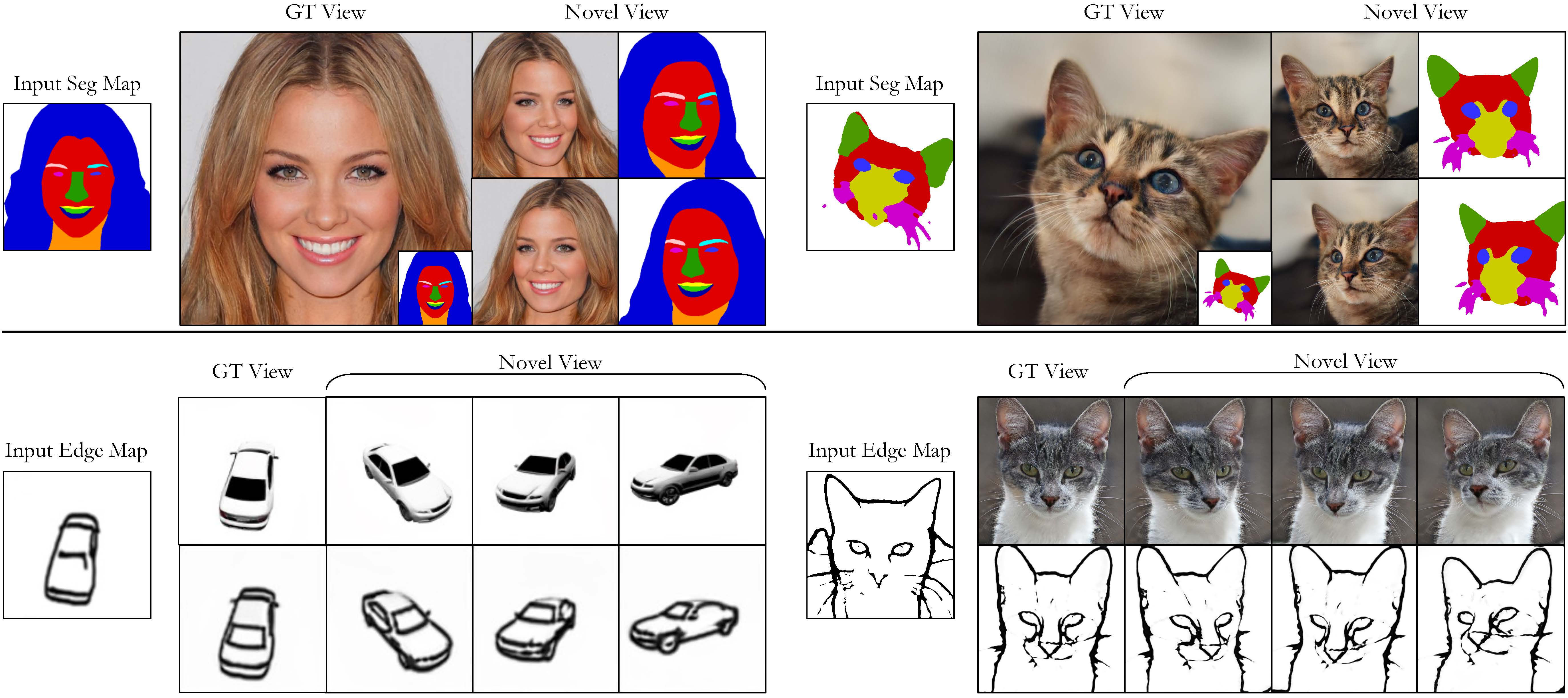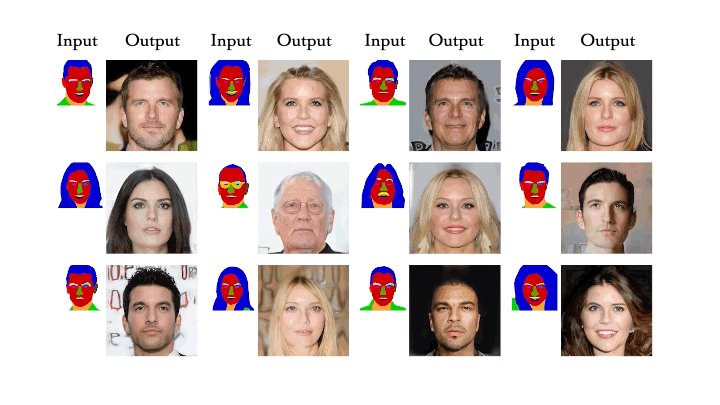This is the official PyTorch implementation of "3D-aware Conditional Image Synthesis". Pix2pix3D synthesizes 3D objects (neural fields) given a 2D label map, such as a segmentation or edge map. We also provide an interactive 3D editing demo.
demo_2.mp4
3D-aware Conditional Image Synthesis
CVPR 2023
Kangle Deng, Gengshan Yang, Deva Ramanan, Jun-Yan Zhu
Carnegie Mellon University
We propose pix2pix3D, a 3D-aware conditional generative model for controllable photorealistic image synthesis. Given a 2D label map, such as a segmentation or edge map, our model learns to synthesize a corresponding image from different viewpoints. To enable explicit 3D user control, we extend conditional generative models with neural radiance fields. Given widely-available monocular images and label map pairs, our model learns to assign a label to every 3D point in addition to color and density, which enables it to render the image and pixel-aligned label map simultaneously. Finally, we build an interactive system that allows users to edit the label map from any viewpoint and generate outputs accordingly.
We provide a conda env file that contains all the other dependencies. You can use the following commands with Miniconda3 to create and activate your Python environment:
conda env create -f environment.yml
conda activate pix2pix3d
We provide our preprocessed datasets, including segmentation maps and edge maps. You can download the CelebAMask dataset, AFHQ-Cat-Seg dataset, and Shapenet-Car-Edge dataset and put those zip files under data/.
You can download our pre-trained models using the following script:
bash checkpoints/download_models.sh
We provide several scripts to generate the results once you download the pre-trained models.
You can generate results based on the samples in the dataset.
python applications/generate_samples.py --network <network_pkl> --outdir <output_dir> --random_seed <random_seeds list, e.g. 0 1> --cfg <configs, e.g., seg2cat, seg2face, edge2car> --input_id <sample_id in dataset>
For example:
| Input Label Map | Generated Image | Generated Label Map |
|---|---|---|
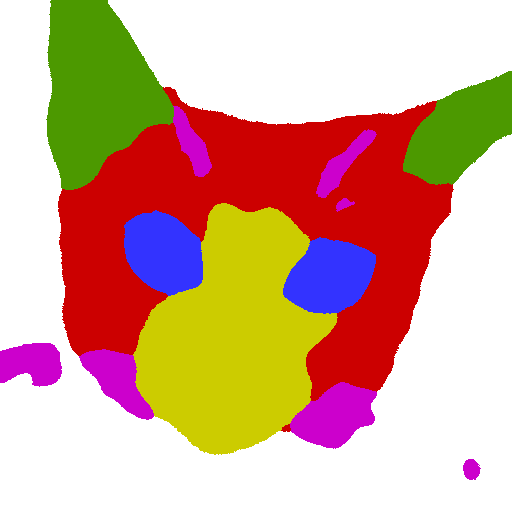 |
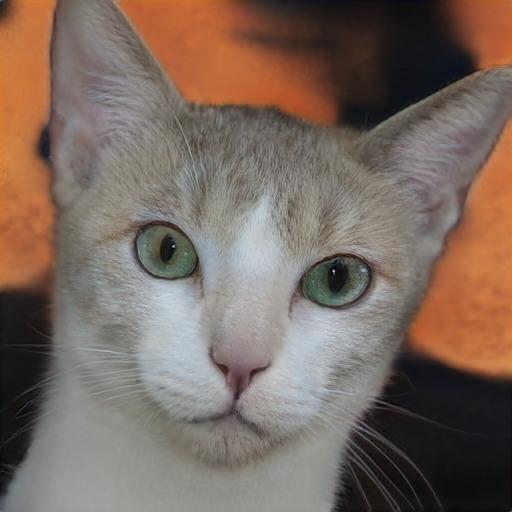 |
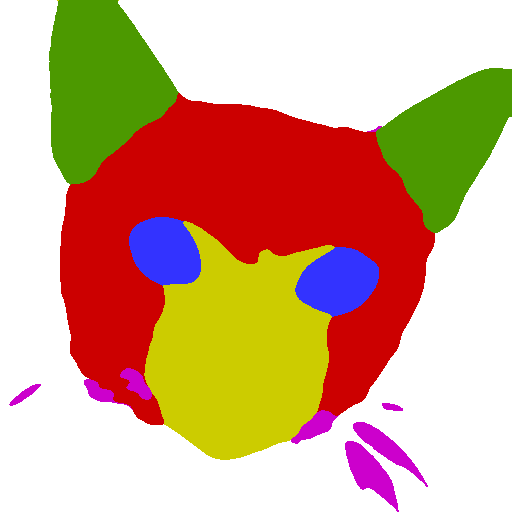 |
You can get the results above by running:
python applications/generate_samples.py --network checkpoints/pix2pix3d_seg2cat.pkl --outdir examples --random_seed 1 --cfg seg2cat --input_id 1666
You can render a video result based on a specified input label map.
python applications/generate_video.py --network <network_pkl> --outdir <output_dir> --random_seed <random_seeds list, e.g. 0 1> --cfg <configs, e.g., seg2cat, seg2face, edge2car> --input <input label map>
For example:
| Input Label Map | Generated Image | Generated Label Map |
|---|---|---|
 |
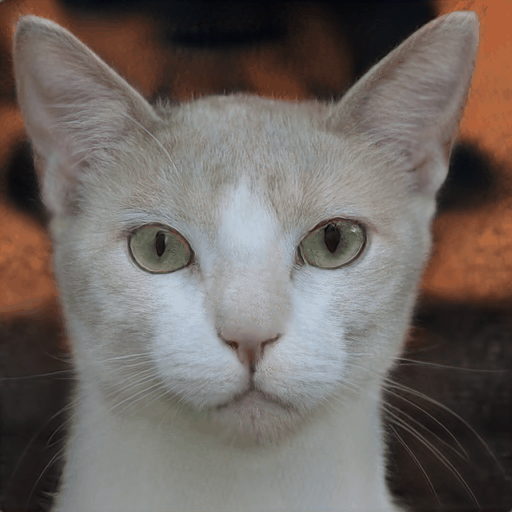 |
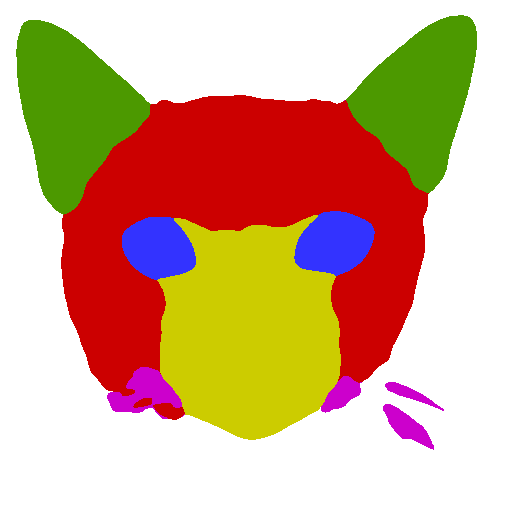 |
You can get the results above using the following command:
python applications/generate_video.py --network checkpoints/pix2pix3d_seg2cat.pkl --outdir examples --random_seed 1 --cfg seg2cat --input examples/example_input.png
You can also extract the mesh and color it using 3D semantic labels. Some extra packages (pyrender, trimesh, and mcubes) are required for mesh extraction. You can install them by pip. The extracted mesh will be saved as semantic_mesh.ply.
For example:
| Input Label Map | Semantic Mesh |
|---|---|
 |
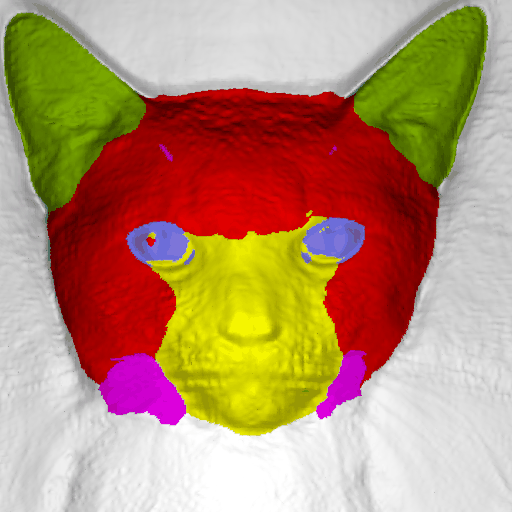 |
You can get the results above with the following command:
python applications/extract_mesh.py --network checkpoints/pix2pix3d_seg2cat.pkl --outdir examples --cfg seg2cat --input examples/example_input.png
You can also launch an interactive demo of 3D editing.
Code is coming soon.
If you find this repository useful for your research, please cite the following work.
@inproceedings{kangle2023pix2pix3d,
title={3D-aware Conditional Image Synthesis},
author={Deng, Kangle and Yang, Gengshan and Ramanan, Deva and Zhu, Jun-Yan},
booktitle = {CVPR},
year = {2023}
}
We thank Sheng-Yu Wang, Nupur Kumari, Gaurav Parmer, Ruihan Gao, Muyang Li, George Cazenavette, Andrew Song, Zhipeng Bao, Tamaki Kojima, Krishna Wadhwani, Takuya Narihira, and Tatsuo Fujiwara for their discussion and help. We are grateful for the support from Sony Corporation, Singapore DSTA, and the CMU Argo AI Center for Autonomous Vehicle Research. This codebase borrows heavily from EG3D and StyleNeRF.
